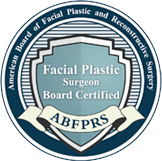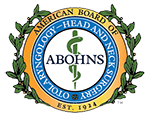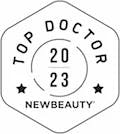“Hooded eyelids” is a term used to describe the appearance of the eyes when sagging skin forms a “hood” over the upper eyelids. As we age, the skin around the eyes can become loose and begin to droop. The skin hangs down over the eyelids and causes the hooded effect, which causes a person to look tired, unhappy, or older.
What can be done about hooded eyelids? Luckily, they can be treated with a procedure designed to tighten and firm the skin and return a youthful, rejuvenated appearance.
Eyelid surgery (also called upper blepharoplasty)
Eyelid surgery is performed to address the following concerns:
- Excess eyelid skin
- Hooded eyelids
- Impeded vision
- Heaviness in the eyelids
- Tension headaches caused by straining muscles due to hanging skin
- Droopy, sagging eyelids
- Excess fat on the eyelids
- Wrinkles around the eyes
- A tired, sleepy appearance in the eyes
Eyelid surgery helps reduce these concerns, making the eyes look more open, refreshed, youthful and awake.
What does eyelid surgery do?
Upper eyelid surgery targets, lifts, and reduces the loose skin on and around the upper eyelids.
Eyelid surgery is usually done under local anesthesia. A single, laser-focused incision is made in the natural crease of the upper eyelid. The incision will eventually fade into a well-concealed scar.
During upper eyelid surgery, the extra skin is removed, and the remaining skin is tightened. The incision is closed with absorbable sutures or biological glues.
After your eyelid surgery
After your eyelid surgery procedure, you’ll need to take a week off to recover. If you wear contacts, before you put them in again, wait ten days to two weeks before putting your contacts in. If you wear glasses, you can begin wearing them again the day following your eyelid surgery.
Be careful to sleep on your back for one to two weeks after your procedure. By this point, any swelling and bruising will be mostly gone. However, do avoid exercise and sun exposure for three to four weeks.
Other options to treat your hooded eyelids
If you’re not ready for surgery, there are nonsurgical treatments to consider as well. Non-surgical blepharoplasty is on the rise. Non-surgical eyelid rejuvenation can be achieved with Botox and dermal fillers, which help to lift and firm the skin around the eyes.
Injections with fillers and Botox can be completed within minutes, and no downtime is required afterward. You may still experience mild side effects, such as redness, and you’ll need additional injections in the future to maintain your results.
Which is the best treatment for me to treat my hooded eyelids?
The best procedure to treat hooded eyelids depends on the condition of your skin and what you’re most comfortable with.
Dr. White will sit down with you and discuss your procedure options, your health history, your concerns about your eyelids, and your aesthetic goals. Dr. White will recommend the best course of action to reduce and address your hooded eyelids, and he will cover any questions or concerns you may have. Call today for a consultation.










